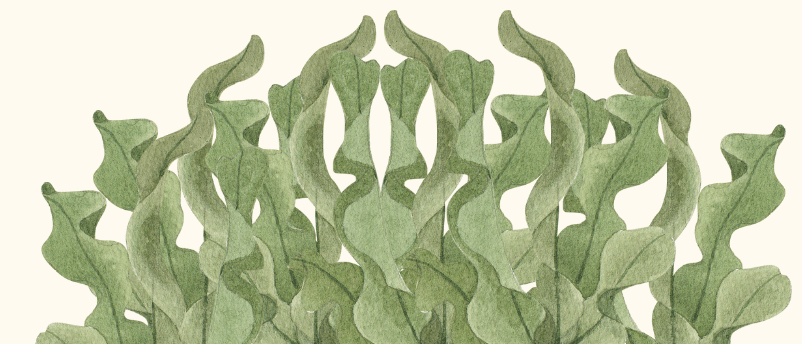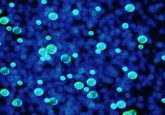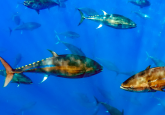Are deep-sea rocks producing ‘dark oxygen’?

Oxygen-producing rocks have been found on the deep seafloor, challenging what we know about oxygen production.
I don’t know about you, but when I learned about oxygen production, it involved plants, photosynthetic bacteria and, importantly, the sun. Now researchers are saying that rocks over 12,000 feet below the surface of the sea are producing oxygen. Rocks? In the dark? Indeed!
An international collaboration of researchers has discovered that the million-year-old rocks that cover the dark seafloor in a region of the Pacific Ocean called the Clarion-Clipperton Zone (CCZ) produce oxygen. This finding has illuminated the potential use of these rocks, known as polymetallic nodules, for powering electric vehicles, while further exploration of this geographical area could help scientists discover single-celled extraterrestrial life.
This study was a product of a group of scientists taking to a research vessel to learn more about the CCZ by way of an environmental survey, sponsored by The Metals Company (Vancouver, Canada). The Metals Company is a deep-sea mining firm interested in extracting rocks, like polymetallic nodules, for their metals. During their study, the team identified these nodules and were surprised by the gas they produced.
Even in the deepest, darkest depths of the ocean, life can be found that has evolved to thrive in such inhospitable environments. Among the rocks focused on in this study, researchers found microbes and, surprisingly, many tiny creatures. When oxygen was found at such depths, the team’s first thought was that it was being produced by microbial activity.
To investigate this oxygen production, the team deployed deep sea chambers that land on the seafloor and encapsulate seawater, sediment, polymetallic nodules and living organisms. The oxygen concentrations in these chambers were recorded every 10 seconds using oxygen optodes; if many breathing organisms were present, then oxygen levels were expected to decrease. However, what they found was that oxygen levels were increasing. The oxygen concentrations in 25 benthic chambers started at 185.2 ± 2.9 µmol l−1 and reached between 201 and 819 µmol l−1 over a 47-hour period.

The neuroprotective effect of seaweed polyphenols
A new study demonstrates the potential for chemicals found in a species of seaweed to protect neuronal cells against Parkinson’s disease.
This finding was met with confusion and numerous rounds of troubleshooting followed. “We did a lot of troubleshooting and found that the oxygen levels increased many more times following that initial measurement,” co-author Jeffrey Marlow (Boston University, MA, USA) reported. “So we’re now convinced it’s a real signal.”
The team concluded that these polymetallic nodules, which are composed of metals such as iron, nickel, cobalt, copper and manganese, undergo seawater electrolysis due to the uneven, densely packed distribution of metal ions, creating a separation of electrical charge powerful enough to split water molecules. The rock, therefore, acts similarly to a battery, producing energy to create this ‘dark oxygen’. Researchers are still unsure how exactly this process occurs and if this oxygen production plays an essential role in the deep seafloor ecosystem where these rocks are found.
The Metals Company is interested in the polymetallic nodules’ battery-like energy production, believing that they could accelerate the transition to battery-powered electric cars and eliminate the need for on-land mining. However, mining in the CCZ remains exploratory as further research is necessary to determine the impact commercial mining would have on deep-sea ecosystems, which have been largely unexplored.
Researchers in the study were also interested in exploring the microbes living in and around the seafloor rocks, hoping to learn more about their survival in such an extreme environment. This could inform investigations of extraterrestrial life, as Earth’s environments such as deserts, seafloor vents and volcanoes are similar to conditions on Mars and Saturn’s moons.
“For the most part, we think of the deep sea as a place where decaying material falls down and animals eat the remnants. But this finding is recalibrating that dynamic,” Marlow concluded. “It helps us to see the deep ocean as a place of production, similar to what we have found with methane seeps and hydrothermal vents that create oases for marine animals and microbes. I think it’s a fun inversion of how we tend to think about the deep sea.”
However, these potentially groundbreaking results have not been without controversy. Since its publication, a preprint has emerged on ResearchGate questioning the methodology used in the study and The Metals Company, which funded the research, has distanced themselves from the paper, calling it flawed. Meanwhile, the Authors of the study have stuck to their conclusions, insisting that, try as they might, they could not disprove their findings. Needless to say, this will be an interesting case to watch unfold, and we will be sure to keep you updated as more evidence comes to light!
Submit Your Research to the F1000Research Plant Science Gateway
Contribute to advancing plant science and its role in addressing global climate challenges by publishing your research with the F1000Research Plant Science Gateway. With trusted publishing, open access, and transparent peer review, your work will uphold the highest standards of rigor and integrity while driving innovation in plant biology, sustainability, and climate resilience.
Join a platform that values transparency, openness, and author control. Submit your research today at F1000Research Plant Science Gateway.





